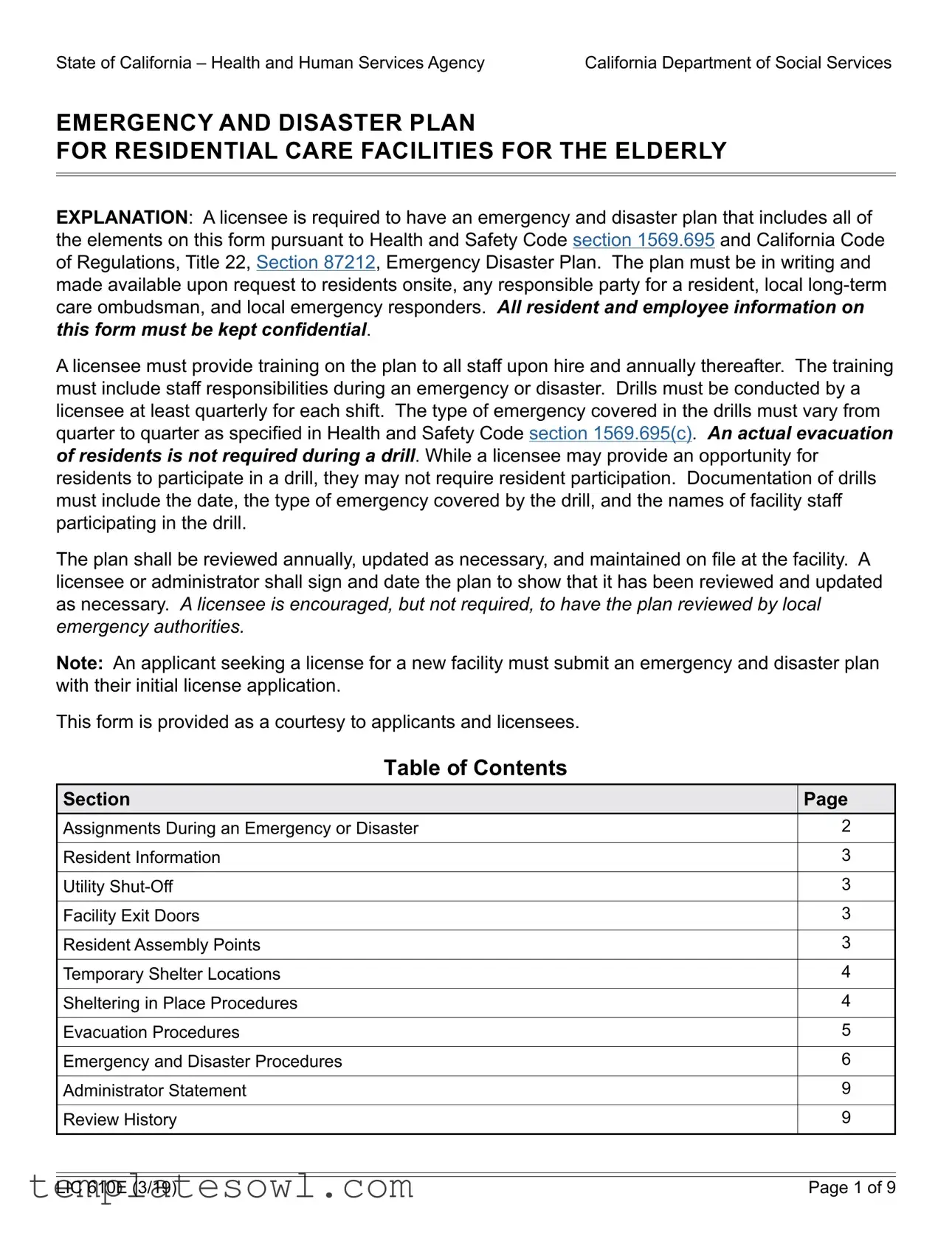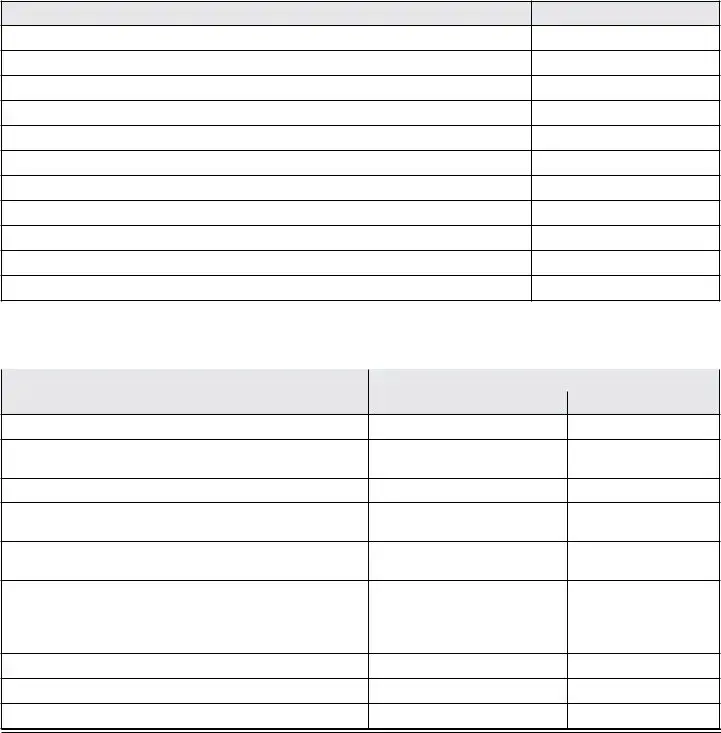Misconception 1: The LIC 610E form is optional for all residential care facilities.
In reality, this form is a requirement under California law. Facilities must have an emergency and disaster plan in compliance with specific regulations.
Misconception 2: Only the facility administrator needs to be familiar with the LIC 610E form.
It's crucial for all staff members to be trained on the emergency plan. This ensures everyone knows their responsibilities during an emergency.
Misconception 3: There are no consequences for not conducting regular drills.
Facilities are required to conduct drills quarterly for each shift. Failure to do so could result in penalties or issues with licensing.
Misconception 4: Residents must actively participate in emergency drills.
While residents can be invited to participate, their participation is not mandatory. Facilities should respect the comfort levels of their residents.
Misconception 5: The plan can be written and forgotten after it is created.
The emergency plan must be reviewed annually and updated as necessary. It's a living document that requires ongoing attention.
Misconception 6: Confidentiality rules do not apply to resident information on the LIC 610E form.
All resident and employee information collected must be kept confidential, as required by law. This protects the privacy of everyone involved.
Misconception 7: A single location for shelter is sufficient during an emergency.
Facilities should identify at least two appropriate shelter locations outside their immediate area to ensure safety and readiness in case of an evacuation.
Misconception 8: Staff only need to know about the emergency plan at the time of hire.
Training on the emergency plan is mandatory both at the time of hire and annually thereafter to keep everyone informed and prepared.
Misconception 9: The form does not need to be made available to residents or their representatives.
The emergency plan must be available upon request to residents and their responsible parties to ensure transparency and trust.
Misconception 10: Emergency contact information is not crucial for the LIC 610E form.
Listing emergency contacts is essential. It ensures that help can be reached quickly during a crisis, enhancing the safety of residents.









